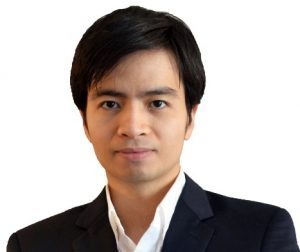More details about the research being developed in Prof. Thanh Nguyen’s research group can be found in UConn Today.
News
New Materials Testing Apparatus Could Mean Money, Time Saved for Manufacturers
http://news.engr.uconn.edu/new-materials-testing-apparatus-mean-money-time-saved-manufacturers.php
Prof. Xinyu Zhao Awarded American Chemical Society Grant for Research on Bluff-Body Stabilized Premixed Flame
Dr. Xinyu Zhao has been awarded an American Chemical Society Grant through the Petroleum Research fund for her research entitled “A computational study of the lean blow-off mechanisms for a bluff-body stabilized premixed flame.” The fund supports research directly related to petroleum and fossil fuels at nonprofit institutions around the world.

Increasingly stringent emission requirements have recently generated a great deal of interest in lean and stable combustors, i.e. combustors that manipulate air-fuel ratios to increase fuel efficiency and reduce emissions while maintaining stable combustion. One way to stabilize flames in a combustor is through bluff bodies, but the events that lead to lean blowoff (flame extinction) remain unclear due to a variety of factors that require consideration (e.g. highly-transient turbulent flow fields and finite-rate chemistry).

Professor Zhao’s research aims to further the understanding of this phenomenon by using a large-eddy simulation to model and investigate a bluff-body stabilized lean premixed propane flame undergoing intense turbulence. UConn ME colleagues in Professor Baki Cetegen’s group carry out the experiments using laser diagnostics. The proposed modeling study allows flame characteristics such as turbulent flame speed, flame surface densities, strain rates, and various chemical and flow time scales relevant to blowoff to be studied and compared with real world experiments. Discovering the key time scales that lead to blowoff could yield controlling strategies and operation conditions for bluff-body stabilized flames.
Recently Professor Zhao also received the Young Investigator (YIP) Award from the Air Force Office of Science and Research. Read more about her research on her website.
Prof. Zhao Awarded Air Force Young Investigator Program for Work on Turbulent Premixed Flames
The Air Force Office of Scientific Research (AFOSR) Young Investigator Research Program (YIP) has honored Professor Xinyu Zhao as one of just 43 scientists and engineers awarded YIP grants for her research project titled “Pockets in Highly Turbulent Premixed Flames: Physics and Implications on Modeling.” The grant is worth a total of $450,000 over three years and is intended to foster the research of young investigators in science and engineering.
Dr. Zhao’s research aims to understand the underlying physical processes of highly turbulent premixed flames, which impact the efficiency and stability of modern aeronautical engines.

The investigation targets two specific “pockets”: the fresh-mixture pockets on the product side of the flame (“FiP”) and the product pockets on the fresh mixture side of the flame (“PiF”). The existence of these pockets is a distinctive feature of flames within the broken reaction zones, and is hypothesized to contribute to the deviation of the flame statistics from those within the flamelet regimes.

Aiding the current understanding of combustion in aeronautical engines could have far reaching impacts on a number of fields and industries and would be of great benefit to the Air Force. A better understanding of the factors that affect combustion can eventually allow engineers to improve the efficiency of these engines. You can read more about Professor Zhao’s research on her laboratory’s website.
Prof. David Pierce Wins 3 New Grants
 Assistant Professor David Pierce will be deploying his Interdisciplinary Mechanics Laboratory to tackle three projects that just received funding: two from the National Science Foundation (NSF) and one from the U.S. Army Natick Soldier Research Development and Engineering Center (NSRDEC).
Assistant Professor David Pierce will be deploying his Interdisciplinary Mechanics Laboratory to tackle three projects that just received funding: two from the National Science Foundation (NSF) and one from the U.S. Army Natick Soldier Research Development and Engineering Center (NSRDEC).
The first NSF-funded project (titled Biomechanical Simulations of Progressing Osteoarthritis to Advance Understanding and Therapies) explores how stress distributions within human cartilage tissue affect the progression of osteoarthritis (OA). As Principle Investigator (PI), Prof. Pierce will collaborate with Co-PI Prof. Cory Neu (CU Boulder). Their team will use mechanical and imaging experiments, simulations of virtual evolving in vivo human cartilage, and longitudinal Magnetic Resonance Images (MRIs) from the NIH-funded Osteoarthritis Initiative (OAI) database to characterize how intra-tissue stress distributions relate to progressing OA.
The second NSF-funded project (titled Understanding the Multiscale Mechanics of Nerve Endings to Address Visceral Pain) investigates the biomechanics of colorectal tissue and the micromechanical environment of the tissue’s sensory nerve endings. As Co-PI, Prof. Pierce will collaborate with the project’s PI, fellow UConn Professor Bin Feng. In colorectal tissue, mechanical stretch (distention) results in visceral pain, the signal for which arises in the peripheral nervous system (PNS). Most drug treatments of visceral pain affect both peripheral and central nervous systems (CNS) and result in adverse side effects on the CNS. Advanced understanding of the biomechanics of visceral nerves could lead to more specific and effective therapeutic targets.

Finally, as PI for the NSRDEC-funded project (titled Developing Biofidelic Models as Surrogates for Human Subjects in Protective Clothing and Individual Equipment and Augmentation Testing) Prof. Pierce and his group, in collaboration with NSRDEC, aim to create subject-specific multiscale models of knee joints and cartilage to predict performance of Soldiers carrying various loads. The products of this research will clarify how Soldier-specific loads translate to soft tissues in the joint and how cyclic fatigue under body-borne loads impacts joint health to optimize physical performance and reduce the risk of injury.
For more information about Prof. Pierce’s research, see his Interdisciplinary Mechanics Laboratory website.
New technology from Prof. Thanh Nguyen published in Science
The latest issue of Science features a new technology invented and developed by our very own assistant professor Dr. Thanh D. Nguyen. Prof. Nguyen’s brainchild, developed during his postdoc with Prof. Robert Langer at MIT, offers the latest advance in 3D manufacturing for microstructures of biomaterials: StampEd Assembly of polymer Layers, or SEAL for short. The reliance of current 3D printing techniques on potentially toxic impurities (e.g. UV-curing agents) for formulating printable inks poses clear problems for bio and medical applications. SEAL, on the other hand, can create nearly any 3D micro-objects of pure biopolymers (e.g. polymers used for surgical sutures) with complex geometries and at high resolution. Such enhanced biocompatibility of fabricated 3D microstructures for medical applications enables a broad scope of exciting new possibilities. For example, Prof. Nguyen along with other researchers at MIT used SEAL to create 3D core-shell micro-particles containing biological cargos (e.g. vaccines), which can be programed to sequentially release at different times or even at specific locations within the body. The compelling implications of this technique include the potential for a new set of single-injection vaccines/drugs, which could avoid the repetitive, painful, expensive, and inconvenient injections often required to administer vaccines and drug therapies like insulin or growth hormone. To view the article, click here.
New Device for Testing Heart Health
 Dr. George Lykotrafitis and his student Kostyantyn Partola have been featured for their development of a device that tests blood viscosity – an important indicator of heart health. Kostyantyn has had support from the Accelerate UConn program as well as the Connecticut Center for Entrepreneurship and Innovation Fellowship program to support the commercialization of the technology. More information on their work can be found at UConn Today: http://today.uconn.edu/2017/09/new-device-testing-heart-health/
Dr. George Lykotrafitis and his student Kostyantyn Partola have been featured for their development of a device that tests blood viscosity – an important indicator of heart health. Kostyantyn has had support from the Accelerate UConn program as well as the Connecticut Center for Entrepreneurship and Innovation Fellowship program to support the commercialization of the technology. More information on their work can be found at UConn Today: http://today.uconn.edu/2017/09/new-device-testing-heart-health/
Prof. Thanh Nguyen garners the NIH R21 Trailblazer Award for his work on “Bionic Self-stimulated Cartilage.”
 Dr. Nguyen received a NIH R21 trailblazer young investigator award for a project entitled “bionic self-stimulated cartilage”, in collaboration with Dr. Cato Laurencin at UConn Health, school of medicine. This highly-interdisciplinary project aims to integrate a new biopolymer, developed in Nguyen Lab, with a chondrocyte tissue graft to create an exciting hybrid artificial cartilage. The PIs hope this bionic cartilage in implantation will be able to adapt to mechanical joint-force for obtaining an optimal cartilage growth and regeneration. Results from this research will have a great impact for an effective treatment of cartilage diseases such as osteoarthritis. The research is a collaborative work between Nguyen lab (UConn Storrs) in materials processing, device fabrication, tissue integration, and in vitro study, and Laurencin Lab (UConn Health) in animal study and in vivo assessment.
Dr. Nguyen received a NIH R21 trailblazer young investigator award for a project entitled “bionic self-stimulated cartilage”, in collaboration with Dr. Cato Laurencin at UConn Health, school of medicine. This highly-interdisciplinary project aims to integrate a new biopolymer, developed in Nguyen Lab, with a chondrocyte tissue graft to create an exciting hybrid artificial cartilage. The PIs hope this bionic cartilage in implantation will be able to adapt to mechanical joint-force for obtaining an optimal cartilage growth and regeneration. Results from this research will have a great impact for an effective treatment of cartilage diseases such as osteoarthritis. The research is a collaborative work between Nguyen lab (UConn Storrs) in materials processing, device fabrication, tissue integration, and in vitro study, and Laurencin Lab (UConn Health) in animal study and in vivo assessment.
Emeritus Prof. Lee Langston goes to Italy with the ASME History & Heritage Committee
Professor Emeritus Lee Langston, a member of the ASME History & Heritage Committee, recently traveled to Palermo, Italy, to represent UConn and ASME at the ceremony recognizing the engine collection housed within the University of Palermo’s Museum of Engines and Mechanisms.
 From left to right: Giuseppe Genchi, Terry Reynolds, and Lee Langston. Photo by ASME/Wil Haywood.
From left to right: Giuseppe Genchi, Terry Reynolds, and Lee Langston. Photo by ASME/Wil Haywood.
More details can be found on the ASME website.
Since the invention of the wheel, mechanical innovation has critically influenced the development of civilization and industry as well as public welfare, safety and comfort. Through its History and Heritage program, ASME encourages public understanding of mechanical engineering, fosters the preservation of this heritage and helps engineers become more involved in all aspects of history.
Professor Emeritus Lee Langston is actively involved in the committee’s ASME Landmark program. Historic Mechanical Engineering Landmarks are existing artifacts or systems representing a significant mechanical engineering technology. They generally are the oldest extant, last surviving examples typical of a period, or they are machines with some unusual distinction. Over 270 Landmarks have been designated.

